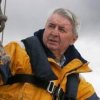The Irish fishing industry is not being consulted properly about the development of offshore wind farms, according to the Chief Executive of the longest-established fish producer’s organisation in the State, the Irish Fish Producers Organisation.
According to Aodh O Donnell, "fishermen have a right to be consulted because it affects their livelihoods." Available charts indicate that most of the rich Irish Sea fishing area is targeted for turbine development. Fishing vessels could be displaced if there is an untrammelled development of Offshore Wind Turbines. Our industry has already taken too many hits, but proper consultation could allow us all to co-exist.”
According to the IFPO, Environment Minister Eamon Ryan has signed off on six Irish Sea developments, which will move to planning stage. "There is unease that this appears to be rushed.”
Mr O Donnell was one of six fisheries representatives to take part in a fact-finding mission to a Floating Offshore Wind Farm in Kincardine, Aberdeenshire. CEOs of the other fish producer organisations were also involved.
The visit was arranged by an Offshore Renewable Energy (ORE) developer, Simply Blue Group.
“We are of the view that no planning should proceed until the new Maritime Area Regulatory Authority (MARA) is established. There are issues around marine interests and socio-economic or environmental impact assessments. But there are also huge questions about foreign ownership of Irish energy sources, which could affect future energy security,” Mr O’Donnell said.
. “Mutual respect must be given. For large wind farm developers, most of the first phase of applications for wind farms is in the rich Irish Sea fishing and spawning grounds. Unfortunately, international experience indicates that the co-location of Offshore Wind with trawl fisheries is not possible’.
“At present, we are experiencing a gold rush approach, as developers compete for space. We must work hard to defend our communities. We must avoid a lose-lose situation. The correct pathway must involve the recognition of traditional pre-existing fishing rights’.
“There is a lot of sea available for development. “But a land grab of traditional productive fishing grounds is not acceptable. The Minister and Wind Farm industry need to take account of the rights of our fishers, who are often the last to be consulted.”


























































